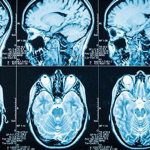
Nearly a quarter of Labrador retrievers are more likely to be obese due to a genetic “double-whammy,” a new study finds. This gene mutation causes Labradors to both feel hungry all the time and also burn fewer calories, British researchers report. The mutation involves a gene called POMC, which plays a critical role in hunger and energy use among Labs. About 25% of Labradors and 66% of flat-coated retriever dogs have this POMC mutation, which causes increased interest in food, researchers said. Specifically, it makes them hungrier in between meals, even though they don’t need to eat more to feel full at mealtime. “We found that a mutation in the POMC gene seems to make dogs hungrier. Affected dogs tend to overeat because they get hungry between meals more quickly than dogs without the mutation,” said study author Eleanor Raffan, a researcher in the University of Cambridge’s Department of Physiology, Development and Neuroscience. Dogs with the POMC mutation also tend to burn about 25% less energy at rest than dogs without it, the researchers added. That means they should consume fewer calories to maintain a healthy body weight. “Dogs with this genetic mutation face a double whammy: They not only want to eat more, but also need fewer calories because they’re not burning them off as fast,” Raffan said in a university news release. The… read on > read on >


















